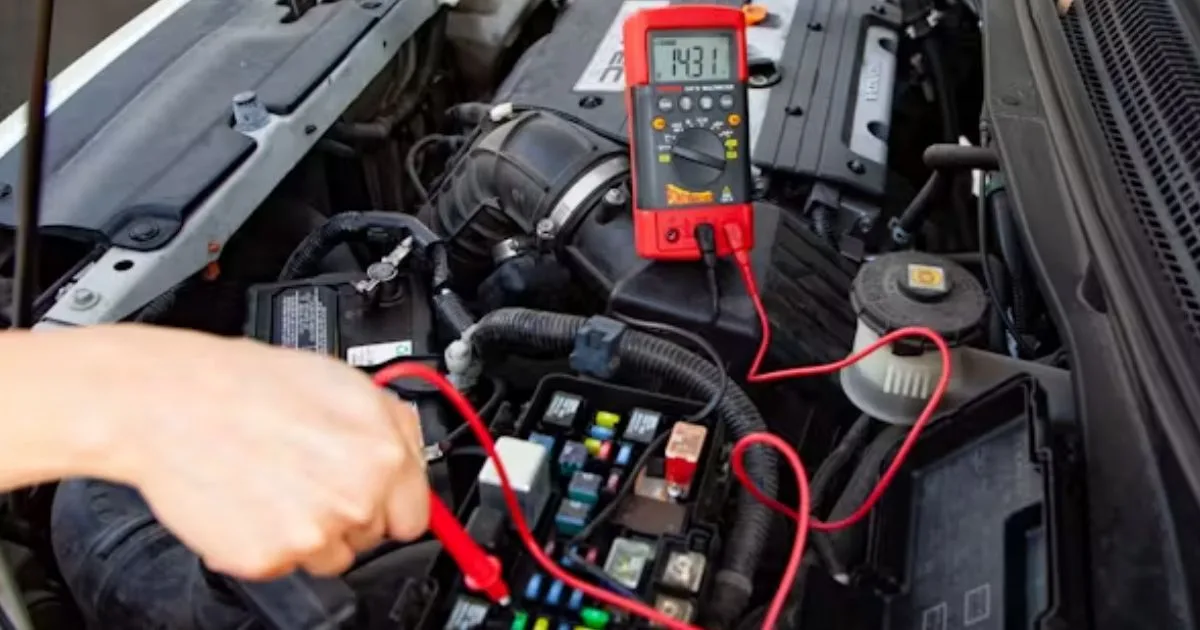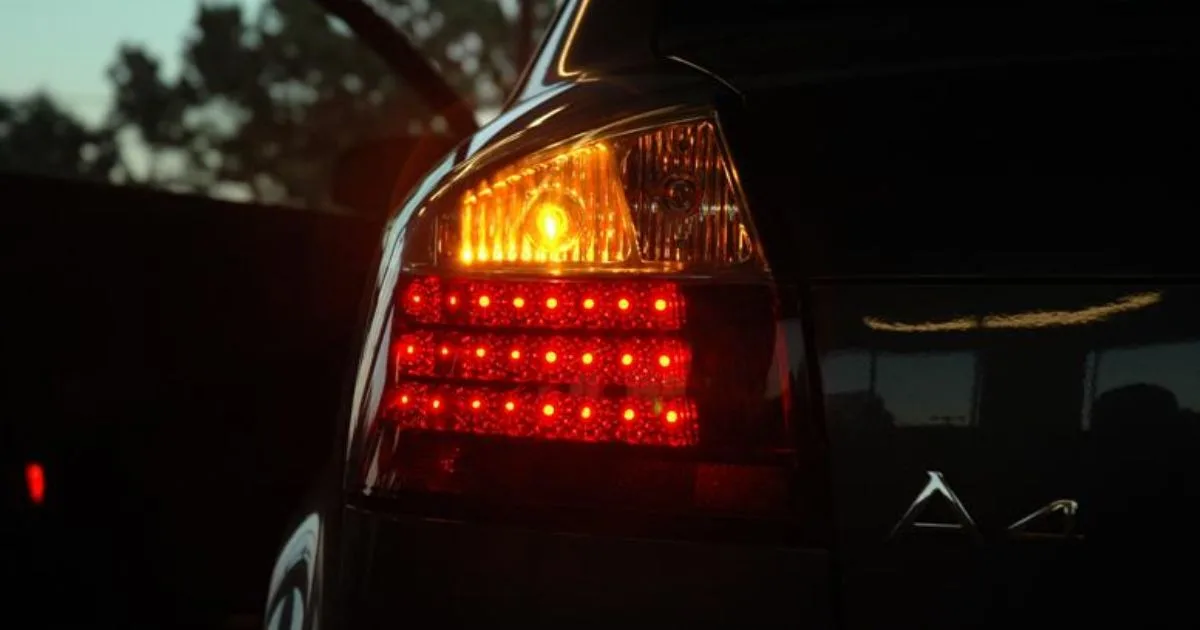
Have your turn signals stopped responding? You're not alone.
Many drivers face this issue, often at the most inconvenient times. The turn signal, a critical component for safe driving, communicates your intentions to other road users. When they fail, it's not just a nuisance; it's a safety concern that needs immediate attention. Imagine driving without being able to signal your turns or lane changes—frustrating and hazardous, right? This is where our guide comes in handy. It's important to know what steps to take when your car's turn signals give up on you. From checking the basics, like bulbs and fuses, to understanding more complex electrical issues, we'll walk you through the troubleshooting process. You'll learn how to identify the problem, what tools you might need, and when it's time to call in a professional. We aim to provide you with practical advice to get those signals blinking again, ensuring you stay safe and compliant on the road. Let's dive into the world of turn signal troubleshooting and fix that blinker!Introduction To Turn Signal Issues
Turn signals are critical for safe driving. They provide clear intentions to other drivers when you're about to turn or change lanes. Ignoring issues with turn signals can lead to dangerous situations or even accidents.Importance Of Functioning Turn Signals
Functioning turn signals are a must for road safety. They act as a communication tool on the road. Without them, the risk of collisions increases. They are also a legal requirement in many areas.Common Symptoms Of Turn Signal Problems
- Signal lights not blinking
- Blinking faster than usual
- Dashboard indicator flashing quickly
Initial Checks When Turn Signals Fail
When turn signals stop working, it's crucial to act quickly. Your safety and communication on the road depend on them. This guide walks you through initial checks. These steps help identify common issues. No need for advanced tools or skills. Ready? Let's dive in.Examining The Turn Signal Lever
Start with the turn signal lever. It's easy to overlook. Sometimes, the problem is simple. The lever might be stuck or broken. Gently wiggle the lever. Feel for any unusual resistance or looseness. A normal lever moves smoothly. If it doesn't, this might be the issue.Checking For Blown Fuses
Next, check the fuses. Fuses protect the car's electrical system. A blown fuse stops electricity. This can make turn signals fail. Find the fuse box. It's usually under the dashboard or near the engine. Look for a diagram in the car's manual. It shows which fuse controls the turn signals. Remove the fuse. Check the wire inside. If it's broken, replace the fuse. A new fuse can fix the problem. Troubleshooting The Bulbs And Connections
Troubleshooting The Bulbs And Connections
Troubleshooting The Bulbs And Connections
Turn signals play a critical role in road safety. When they stop working, it's urgent to fix them. Simple steps can troubleshoot the issue. Let's focus on the bulbs and connections.How To Inspect Turn Signal Bulbs
Inspection is the first step. Ensure the car is off and keys are out of the ignition. Open the signal cover to access the bulb.- Remove the bulb gently.
- Look for dark areas or a broken filament.
- Replace with a new bulb if needed.
Testing And Cleaning Electrical Connections
Corrosion or loose connections can cause issues. Wear safety gloves before you start.- Locate the socket and wiring.
- Use a multimeter to test for power.
- Clean any rust or dirt on the connections.
- Ensure wires are secure.
Flasher Units: The Heartbeat Of Turn Signals
Turn signals are critical for safe driving. They rely on flasher units to operate. These units cause the clicking sound and blinking lights we are familiar with. If signals fail, check the flasher unit first. This component is the heartbeat of a turn signal system.Identifying A Faulty Flasher Unit
Signs of a bad flasher unit include:- Constantly lit turn signals
- Signals blink too fast or too slow
- No blinking or clicking sounds
Replacing The Flasher Unit
To replace the flasher unit:- Turn off the car and remove keys
- Locate the flasher unit using the manual
- Detach the old unit
- Compare it with the new one
- Plug in the new unit firmly
- Test the turn signals
Turn Signal Relay Examination
Exploring the turn signal relay is crucial when turn signals fail. This small device controls the blinking speed and operation of your turn signals. A faulty relay often causes signal issues. Let's dive into how to locate and test this component.Locating The Turn Signal Relay
First, find the relay. It's usually under the dashboard or near the fuse box. Look for a small, plastic box. It might click when you turn the signal on. This sound helps identify the right part.Testing And Replacing A Bad Relay
Testing is straightforward. Use a multimeter. Set it to measure resistance. Connect it to the relay's terminals. A working relay shows some resistance. No resistance means it's time for a new one. Replacing it is simple. Remove the old relay. Push the new one into place. Test your turn signals. They should work now.Multifunction Switch Issues
Driving without working turn signals is a risk no one should take. The multifunction switch, essential for signal operation, could be the culprit. Let's explore this common issue and find out what signs to look for and how to fix them.Symptoms Of A Failing Switch
Spotting a faulty multifunction switch is key. Here are signs. The turn signals may stop working or work intermittently. You might notice strange noises when signaling. Sometimes, other controls on the switch, like the wipers, may malfunction too.Steps To Replace The Multifunction Switch
Replacing the switch is a task you can do. First, disconnect the battery. Remove the steering column covers with a screwdriver. Carefully take out the old switch. Connect the new switch and reassemble the covers. Reconnect the battery. Test your work to ensure the signals work right. Advanced Electrical Diagnostics
Advanced Electrical Diagnostics
Advanced Electrical Diagnostics
Turn signals not working can be a headache. Fear not. Advanced Electrical Diagnostics come to the rescue. This section dives deep. It helps find and fix the issue. Ready?Using A Multimeter To Diagnose Issues
First, grab a multimeter. This tool checks electrical flow. No guesswork here. Turn off the car. Connect the multimeter to the turn signal circuit. Look for a reading. No reading? There's a break in the circuit. Time to trace it.Tracing The Turn Signal Circuit
Start at the fuse box. Fuses good? Move on. Check the wiring. Look for damage. Wires intact? Next, the turn signal switch. Problems here? Replace it. Still stuck? The turn signal relay might be the culprit. Check that too. Remember, safety first. Always disconnect the battery before starting. This guide simplifies troubleshooting. Fixing turn signals is now easier. Good luck!When To Seek Professional Help
Turn signals are vital for safe driving. If they fail, it's time to seek professional help. Trying to fix electrical issues without expertise can lead to further damage or compromise safety. Certain signs suggest the need for a professional mechanic. These include inconsistent signal operation, no response from the signal lever, or unusual blinking patterns.Complex Electrical System Concerns
Modern cars have intricate electrical systems. Diagnosing turn signal problems can be complex. A professional has the tools and knowledge to navigate these systems safely. They can trace issues back to their source. This might be a faulty relay, a broken wire, or a computer system malfunction.- Wiring issues: Professionals can handle delicate wiring without causing shorts or fires.
- Relay problems: They can test and replace relays if needed.
- Computer diagnostics: Mechanics use specialized equipment to diagnose and reset vehicle computers.
Benefits Of Professional Diagnostics
There are clear benefits to professional diagnostics. Mechanics have the right tools and knowledge. This ensures an accurate diagnosis and repair.- Accurate assessment: Avoid guesswork with precise diagnostics.
- Cost-effective: Prevent additional costs from incorrect repairs.
- Time-saving: Mechanics can identify and fix issues quickly.
- Warranty protection: Keep your vehicle's warranty intact with professional service.
 Preventive Measures And Maintenance Tips
Preventive Measures And Maintenance Tips
Preventive Measures And Maintenance Tips
Trouble with turn signals can catch you off guard. Stay ahead with smart care. Regular checks and simple steps help. They keep signals working and you safe on the road. Learn easy ways to prevent signal issues now.Routine Checks For Turn Signal System
Make it a habit to check signals often. Do this before you drive. Look for burnt-out bulbs. Listen for fast clicking sounds. These are signs to act fast. Fixing problems early saves time and keeps you legal on the road.Ensuring Longevity Of Turn Signals
Clean connections keep signals bright. Use proper bulbs to avoid damage. Replace in pairs for even brightness. This simple care extends life. It helps avoid sudden signal loss. Safe driving depends on clear signals.Conclusion: Staying Safe On The Road
Your turn signals are key for safe driving. They tell others about your next move. Ignoring faulty signals can lead to danger. Let's ensure they work right.Recap Of Quick Fixes For Turn Signals
Before you seek a mechanic, try these:- Check the bulbs.
- Replace fuses if needed.
- Test the turn signal relay.
The Importance Of Timely Repairs
Don't wait to fix your turn signals. Small issues can turn big fast. A working signal is a must. It keeps you and others safe. Always choose safety first.Frequently Asked Questions
Why Do Turn Signals Stop Working?
Turn signals may stop working due to a burnt-out bulb, a blown fuse, or a faulty turn signal relay. These components are crucial for signal operation and require regular checks to ensure functionality.How Can I Fix Non-working Turn Signals?
To fix non-working turn signals, start by checking the bulb and fuse. If they are fine, inspect the turn signal relay and wiring. Often, replacing the faulty component resolves the issue. Always consult your vehicle's manual for specific instructions.What Are Common Signs Of Turn Signal Failure?
Common signs include no blinking, rapid blinking, or lights staying on without blinking. These symptoms suggest a malfunction in the turn signal system, often due to bulb or fuse issues.Is It Expensive To Repair Turn Signals?
The cost of repairing turn signals varies. If it's a simple bulb replacement, it's relatively inexpensive. However, if the issue lies with the relay or wiring, costs can be higher. DIY fixes can save money if you're knowledgeable.Conclusion
Trouble with turn signals can be frustrating and unsafe. Always check bulbs and fuses first. A quick inspection may solve the issue fast. Don't forget, faulty wiring or a bad relay could be the culprit. Regular maintenance helps avoid such problems. Visit a mechanic for complex issues. Remember, working turn signals are vital for road safety. Drive responsibly and keep your car signals in check. Stay safe on the roads.Disclosure
Some links may be affiliate links. That means we may earn a small commission at no extra cost to you.